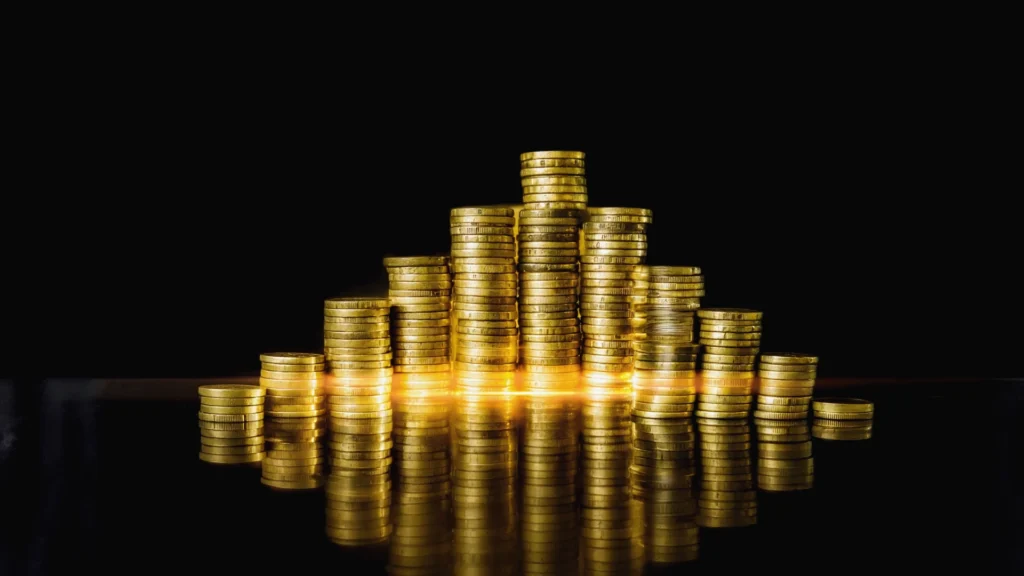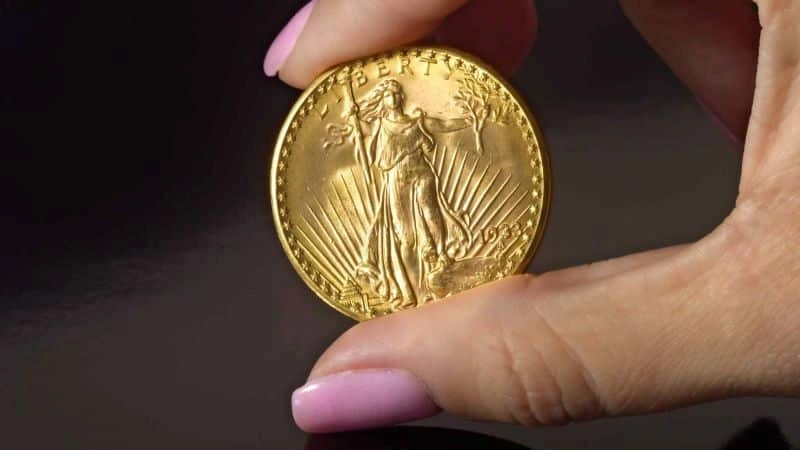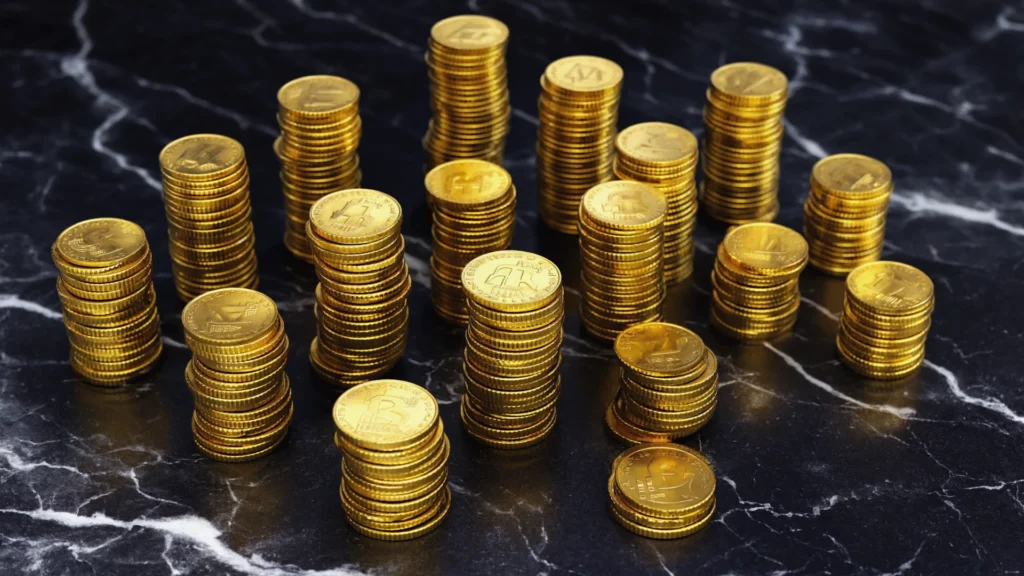How to Tell If a Coin Is Rare and What to Do Next
Have you ever emptied your pocket change or inherited a small coin collection and wondered how to tell if a coin is rare? In the world of numismatics, rare coins worth money sometimes turn up in the most unexpected places—tucked away in an old jar, handed down through generations, or even picked out of circulation.

📘 Download the full guide: Numismatics Handbook — A +135-page resource on US coin collecting.
Below, we explore how to tell if a coin is rare, what steps to take if you think you’ve found one, and which categories of coins are especially worth a closer look.
1) What Makes a Coin “Rare”?
- Low Mintage
- Coins produced in smaller quantities often become scarce over time. Fewer specimens in circulation can mean higher collector demand, which drives up prices.
- High Demand
- Even a coin with a moderate mintage can become rare if it’s highly coveted by collectors. Popular key dates (e.g., 1909-S VDB Lincoln Penny, 1916 Standing Liberty Quarter) consistently command premium prices.
- Survival Rate
- War, metal shortages, and general wear can lead to mass melting or damage, significantly reducing the number of surviving coins in collectible condition.
- Errors and Varieties
- Mint mistakes—like double dies, off-center strikes, or overdates—transform otherwise common coins into rare collectibles. Some error coins sell for hundreds or thousands of dollars.
- Historic or Cultural Significance
- Coins tied to major events or minted for a short period (e.g., 1943 steel pennies during WWII) can pique collector interest, especially if they’re well-preserved.
2) Signs That Your Coin Might Be Valuable
- Date and Mint Mark
- Look for key or semi-key dates in your coin’s series. For example, certain Wheat Pennies (1909-S VDB, 1914-D) or silver quarters (1932-D, 1932-S) are famously scarce.
- The mint mark indicates where the coin was produced (e.g., “D” for Denver, “S” for San Francisco, none or “P” for Philadelphia, “W” for West Point). Some mints struck fewer coins, making them more prized.
- Condition / Grade
- A high-grade coin with minimal wear (often labeled AU for “about uncirculated” or MS for “mint state”) can be worth significantly more than a circulated version.
- Natural color or patina—especially for older coins—often enhances desirability, whereas signs of cleaning can reduce value.
- Oddities or Error Features
- Blurry or doubled letters and numbers can indicate a “double die.”
- A missing mint mark or an extra leaf on a state quarter are just a few examples of mint anomalies that can balloon a coin’s worth.
- Unusual Weight or Composition
- A 1965 quarter struck on a silver planchet (instead of copper-nickel) or a 1943 penny minted on a bronze planchet (instead of steel) are among legendary transitional errors.
- If you suspect your coin is the wrong metal, weighing it can reveal big clues.
- Age and Historical Context
- Older does not always mean rarer, but coins predating 1900—especially from the 18th or early 19th century—can sometimes carry a premium if in collectible condition.
- Foreign coins minted during transitions in currency (e.g., colonial era, independence anniversaries) might also be valuable.

3) How to Identify Rare Coins: Essential Steps
- Research the Coin’s Basics
- Start by noting its denomination, date, mint mark, and any visible design features.
- Compare it against a reliable coin reference book or website (like PCGS CoinFacts, NGC, or a standard catalog).
- Use a Magnifier
- A 10x loupe helps spot fine details—like a die crack, faint overdate, or mintmark alteration.
- Check for wear patterns. Soft details in high points might suggest more circulation than the coin initially appears to have.
- Look for Red Flags
- Signs of cleaning or unnatural shine can reduce numismatic value. Abrasive hairlines or odd discoloration might suggest chemical dipping.
- Counterfeit or altered coins (e.g., adding an “S” mint mark) can trick novices. Compare font shapes and positions with known genuine examples.
- Document Any Error or Variety
- If you find unique anomalies—like doubling in the date or lettering—take clear photos and compare them to known error listings.
- Errors can be subtle, so consulting online resources or numismatic forums can confirm if it’s a recognized variety.
- Weigh It
- Coins are minted with precise weight ranges. If your coin is heavier or lighter than normal, it could be an error, a counterfeit, or a different composition than intended.
4) Valuable Pennies in Circulation: A Quick Check
Pennies (one-cent coins) are among the most commonly searched for rarities. Keep an eye out for:
- 1909-S VDB: Classic key date for Lincoln Wheat Pennies, with mintmark “S” and designer initials “VDB” on the reverse bottom.
- 1914-D: Low mintage from Denver, often heavily worn but still valuable.
- 1922 “No D”: A Denver-made penny missing the “D” mint mark due to a worn die.
- 1955 Double Die: Notorious doubling in the date and “LIBERTY,” worth thousands in better grades.
- Modern Errors: Even post-2000 pennies can have misaligned die strikes or doubled dies, which fetch extra on the collectors’ market.

5) What to Do If You Find a Potentially Rare Coin
- Stop and Don’t Clean It
- Harsh cleaning can ruin a coin’s surfaces, drastically reducing value. Resist the urge to polish or scrub.
- Protect It
- Place the coin in a soft flip or holder to prevent further wear. Avoid excessive handling or exposure to moisture.
- Research Sold Prices
- Check recent auction results (e.g., Heritage Auctions, eBay sold listings) for the same date, mint mark, condition, or error.
- This helps you gauge a realistic price range.
- Seek Expert Opinions
- Local coin dealers can offer on-the-spot evaluations, though it’s wise to confirm with a second source.
- Online numismatic forums often provide free insights if you share clear photos and details.
- Consider Professional Grading
- If the coin appears to be a high-value rarity (several hundred dollars or more), a third-party grading service like PCGS, NGC, or ANACS can authenticate and encapsulate it.
- Certification can significantly boost buyer confidence and resale value.

6) FAQ: Rare Coins Worth Money
- Do older coins automatically mean rarer coins?
- Not necessarily. Circulation numbers, survival rates, and collector demand play bigger roles than mere age.
- Should I get all my coins graded?
- Grading fees can add up. Generally, reserve this for coins you’re fairly certain are worth at least $100–$200 or ones with strong collector interest.
- Where should I sell my coin if it’s valuable?
- Options include local coin shops, reputable auction houses, online marketplaces, or numismatic conventions. Choose platforms known for dealing with items in your coin’s value range.
- Can common coins from the 1990s or 2000s be valuable?
- Yes, primarily if they’re error coins or in exceptionally high mint-state grades. Double-check for special varieties or flaw-free conditions.
What makes a coin rare and valuable?
What makes a coin rare and valuable?
A rare coin typically has a low mintage, high collector demand, unique errors, or historical significance. Condition and scarcity also play major roles in a coin’s market value.
How can I identify rare coins in my collection?
Start by checking the coin’s date, mint mark, and condition. Use a magnifying glass to spot errors, compare weights for planchet anomalies, and cross-reference known key dates or varieties using trusted coin guides.
Are coins from the 1900s still worth checking?
Yes. Many early 20th-century coins—like Wheat Pennies, Standing Liberty Quarters, and Barber coins—can be valuable, especially if they have low mintages or are in high grades.
Can coins from the 2000s be worth anything?
Absolutely. While most are common, some modern coins have mint errors or are in exceptionally high mint-state grades, making them desirable to collectors.
What are the most valuable pennies still in circulation?
Keep an eye out for the 1909-S VDB, 1914-D, 1922 “No D,” and the 1955 Doubled Die. Even more recent pennies can hold value if they contain striking errors or are preserved in pristine condition.
How can I tell if I found a mint error coin?
Look for doubled lettering or numbers (double dies), off-center strikes, missing mint marks, die cracks, or unusual weight. These are all signs of potential mint errors.
Should I clean my rare coin before selling it?
No. Cleaning a coin can drastically reduce its value. Collectors prefer original surfaces, even if the coin shows signs of wear or toning.
What’s the best way to protect a potentially rare coin?
Use non-PVC coin flips, capsules, or archival-grade holders. Store them in a cool, dry environment and avoid excessive handling or exposure to air and moisture.
Is it worth getting my rare coin graded?
If your coin could be worth over $100, has a visible error, or is a known key date, grading by PCGS, NGC, or ANACS can authenticate and increase its resale value.
Where can I sell my rare coins for the best price?
Trusted options include local coin shops, numismatic shows, major auction houses, and online marketplaces like eBay—preferably after professional grading if the coin is valuable.
🔍 Explore More Coin Collecting Insights:
🪙 Peace Dollars: History, Symbolism & Collector Legacy
Unlock the story behind America’s silver coin of peace—and why key dates like 1921 and 1928 are heating up the market.
🦬 Buffalo Nickels Guide in 2025
Learn how to identify valuable Buffalo Nickels, spot rare errors, and build a high-value date-and-mint collection.
🛠️ 1943 Steel Pennies: Are They Really Worth $100,000?
Discover the truth behind the famous steel cent and how to spot the ultra-rare bronze error worth a small fortune.
⚖️ How to Trade the Gold/Silver Ratio
Master this time-tested strategy to grow ounces, flip between metals, and optimize your stack in any market.
🧾 Junk Silver Coins: What They Are and Why They Matter
Find out why pre-1965 dimes, quarters, and half dollars still dominate in practical stacking circles.
🌾 Wheat Pennies: Key Dates & Values Every Collector Should Know
Explore which Lincoln cents are truly worth saving—and which errors could be hiding in your pocket change.
GoldSilverStacks Key Insights on Rare Coins
Spotting a rare coin can be a thrilling experience—one that might even pay off handsomely if you handle it correctly. By learning how to identify rare coins (through mint marks, dates, condition, and errors) and taking steps to verify your discovery, you’ll avoid devaluing a potential gem. From valuable pennies in circulation to hidden rarities in inherited collections, a little knowledge can turn casual curiosity into a rewarding pursuit.
Key Takeaways:
- Study the basics: date, mint mark, design features, and overall condition.
- Use tools like magnifiers, scales, and coin reference guides.
- Avoid cleaning or polishing, which can slash value.
- Seek professional grading for high-potential finds.
- Always cross-check with current market data to ensure fair pricing.
Happy hunting—may your pocket change yield a rare piece of history!

